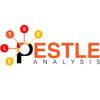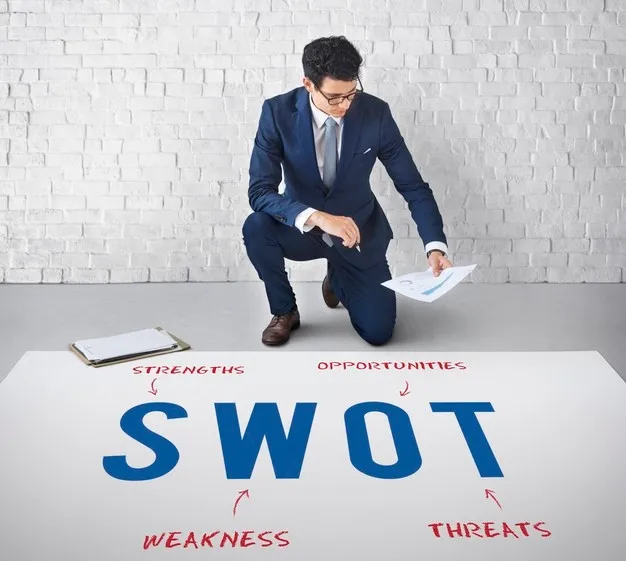SWOT analysis is a convenient tool for strategic planning that allows you to describe the realistic state of affairs of any company or investment object.
SWOT analysis is a convenient tool for strategic planning that allows you to describe the realistic state of affairs of any company or investment object. The advantage of a SWOT analysis is a comprehensive study of the company, competitors, and the industry as a whole.
In this article, we tell you in which cases it is worth using it, how to correctly compose it, and give examples.
Strengths (S)
The list of strengths of the company needs to include competitive advantages, which are determined by the quality of the product, marketing policy, the state of the industry, etc.
For example, for a cafe located in a metropolis next to a business center, the item “wide range of healthy dishes” will be a strong point, provided that only ordinary restaurants and fast food are located in the neighborhood. Conversely, for an ordinary cafe located in a shopping center on a food court, the item “large target audience” will not be a strong point, since food court visitors can equally choose any cafe or restaurant.
Weaknesses (W)
In the list of the company's weaknesses, it is necessary to add factors that impede the growth of profits. At the same time, you need to be able to distinguish between weaknesses and threats. Weaknesses directly depend on the actions of the company.
For example, the unpopularity of official social media channels is a weak point if a company is focused on online sales. And, conversely, for an offline cafe, the appearance of a well-known fast food in the house opposite is a threat. That is, weaknesses directly depend on the company's activities and, hypothetically, can be eliminated by changing the product line, improving service, and optimizing the marketing strategy.
Opportunities (O)
All aspects related to the development of the market or the actions of competitors should be included in the category "Opportunities". That is, these are phenomena that the company cannot directly influence, but from which it can benefit if it implements certain actions in the short and medium-term.
For example, the emergence of a new technology that allows you to reduce the cost of your product is a great opportunity to increase profits after investing in new equipment. Promoting healthy eating is a great opportunity for a farm product store if you increase your marketing spending.
Threats (T)
Threats are all that depend on the opinion of the target audience or on the actions of customers. Circumstances inevitably occur outside the wishes or activities of the company's management. Changes in fashion, increased competition, economic crisis, dependence on imports, seasonal fluctuations in demand, the emergence of substitute goods are all examples of threats. Understanding Threats provides insight into how to conduct business in order to maximize your existing customer base.
The same goes for the stock markets. For example, let's say you want to invest in precious metals and buy gold through an Individual Retirement Account (IRA). To buy gold stocks or ETFs (exchange-traded funds), you should analyze potential threats in the market, guided by expert data on current gold price analysis and other factors.
When and why conduct SWOT Analysis?
Conducting a SWOT analysis is useful for any company, regardless of the field of activity and the current state of the competitive environment. There are three main reasons for doing a SWOT analysis. Depending on them, the time is chosen for conducting a business assessment.
For any business, be it an Internet hypermarket or a charitable organization, one fundamental risk is characteristic - the loss of understanding about the value of the company to its target audience. Regularly, once a year or more often, conducting a SWOT analysis will allow you to soberly assess what is happening in the industry and adapt to changing circumstances.
Another suitable case for conducting a SWOT analysis is to summarize the results of work over a certain period. Such an assessment of the company's performance will help all decision-makers to ensure that they have the same understanding of the current situation. In the case of investors, who may not know the whole "inside", the SWOT analysis is a simple representative report.
Finally, SWOT analysis is an indispensable tool for assessing risks before any major change in the business model. In this case, the SWOT analysis serves as a starting point in deciding the feasibility of the planned actions.
How to perform a SWOT analysis
Preparing a SWOT analysis is a time-consuming and emotional process. Although the report lacks complex economic calculations, it is often difficult to collect relevant factors. The main obstacle in developing a SWOT analysis is human psychology. Employees and company leaders can consciously or unconsciously wishful thinking. To avoid bias towards the report, it should be prepared independently by several specialists/departments. At the final stage, the data should be combined into a SWOT analysis, ranking the factors according to the degree of significance.
Outcome
The use of SWOT analysis in the construction of reports helps to see the big picture: both the trends taking place within the company and the situation on the market as a whole. Although you should not rely solely on SWOT analysis data for strategic planning, it is definitely worth starting with it both in drawing up a new business plan and generating a report on the work performed.


